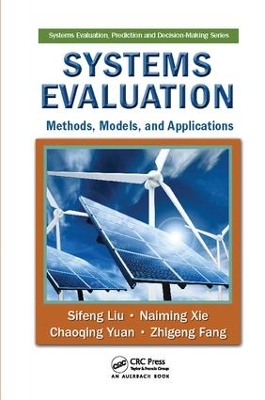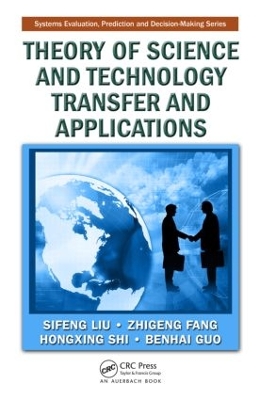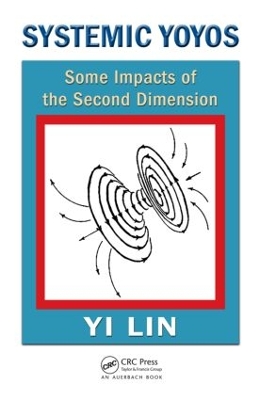Systems Evaluation, Prediction, and Decision-Making
2 primary works • 6 total works
Book 4
Hybrid Rough Sets and Applications in Uncertain Decision-Making
by Lirong Jian, Jian Lirong, Liu Sifeng, Sifeng Liu, and Yi Lin
Book 5
Optimization of Regional Industrial Structures and Applications
by Yaoguo Dang, Sifeng Liu, and Yuhong Wang
Systems Evaluation
by Sifeng Liu, Naiming Xie, Chaoqing Yuan, and Zhigeng Fang
A book in the Systems Evaluation, Prediction, and Decision-Making Series, Systems Evaluation: Methods, Models, and Applications covers the evolutionary course of systems evaluation methods, clearly and concisely. Outlining a wide range of methods and models, it begins by examining the method of qualitative assessment. Next, it describes the process and methods for building an index system of evaluation and considers the compared evaluation and the logical framework approach, analytic hierarchy process (AHP), and the data envelopment analysis (DEA) relative efficiency evaluation method.
Unique in its emphasis on the practical applications of systems evaluation methods and models, the book introduces several new evaluation models of grey system, including general grey incidence model, grey incidence models based on similarity and closeness, grey cluster evaluation based on triangular whitenization functions, and multi-attribute grey target decision model. Explaining intricate concepts in language that is easy to understand it provides step-by-step explanations of the various methods and models.
The text illustrates the practical application, analysis, and computation of systems evaluation methods and models with an abundance of practical examples and empirical studies. The case studies examine post evaluation of road-bridge construction projects, the efficiency evaluation of the science and technology activities, the evaluation of energy-saving projects in China, and the evaluation and selection of international cooperation projects.
Theory of Science and Technology Transfer and Applications
by Sifeng Liu, Zhigeng Fang, Hongxing Shi, and Benhai Guo
Constructive Suggestions for Efficiently Implementing Technology Transfer
Theory of Science and Technology Transfer and Applications presents the mechanisms, features, effects, and modes of technology transfer. It addresses the measurement, cost, benefit, optimal allocation, and game theory of technology transfer, along with the dynamics of the technical diffusion field.
The book explores the concept of technology transfer and its mechanism as the main theme. It measures the cost and benefit of technology transfer, analyzes technology transfer based on technical diffusion field theory, and presents case studies to illustrate the use of a linear programming model and government investment and planning model. The authors also offer strategic analyses that utilize game models and discuss the impact of technology transfer on economic growth.
Accompanied by economic globalization, globalization in technology enables the rational allocation and flow of the elements of technology without restrictions, which in turn allows the sharing of technological activities and the space flow of technology more frequently. This book focuses on the creation and development of advanced productivities. Through many real-world examples, it shows how to implement technology transfer in society, leading technology to become socially and economically valued.
Grey Game Theory and Its Applications in Economic Decision-Making
by Zhigeng Fang
A Novel Method to Analyze Problems and Encourage Systemic ThinkingReal-Life Case Studies Illustrate the Application of the Systemic Yoyo Model in Diverse Areas
Written by the co-creator of the systemic yoyo model, Systemic Yoyos: Some Impacts of the Second Dimension shows how the yoyo model and its methodology can be employed to study many unsettled or extremely difficult problems in modern science and technology.
The first part of the book presents the theoretical foundation of the yoyo model and its empirical justifications. The author then shows how to use the model to address and resolve several problems in scientific areas, such as Newtonian physics, planetary motions, and the three-body problem, as well as economics and finance, such as Becker's rotten kid theorem. The following part discusses the structure of human thoughts, infinity problems in the system of modern mathematics, and the fourth crisis of mathematics. The book concludes with a section on the concept of rolling currents, which can help predict weather changes, especially the arrival of disastrous weather conditions.
Focusing on complex, unresolved issues in modern science, this book thoroughly explains the novel yoyo model and how it can be used to better understand wage differentials, weather patterns, and more.



